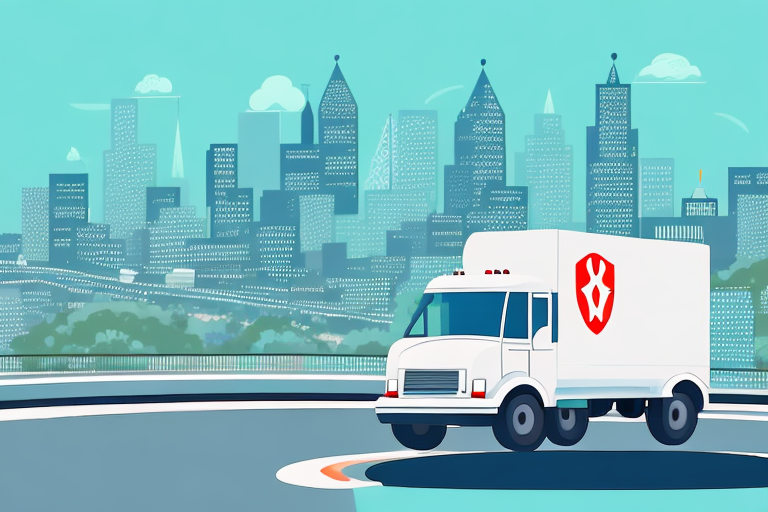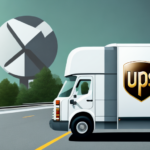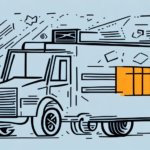Optimizing Last Mile Delivery Logistics for Maximum Efficiency
The last mile delivery is a critical component of modern logistics, involving the transportation of goods from a distribution hub to the final destination, whether a customer's home or a business premises. This phase is pivotal in determining customer satisfaction and can significantly influence a company's reputation and operational costs. As e-commerce continues to grow, optimizing last mile delivery logistics becomes essential for businesses aiming to meet customer expectations and maintain competitive advantage.
Importance and Challenges of Last Mile Delivery
Customer Expectations and Business Reputation
Customers today demand timely, reliable, and flexible delivery options. According to a recent survey by Forbes, 89% of consumers consider fast delivery as a key factor in their purchase decisions. A single delayed or failed delivery can lead to customer dissatisfaction and harm the business's reputation.
Operational Challenges in Last Mile Delivery
Logistics companies face numerous challenges, including:
- Traffic congestion in urban areas
- Accurate delivery address verification
- Limited delivery windows
- Rising demand for same-day and next-day deliveries
- Increased operational costs
Addressing these challenges requires innovative solutions and strategic planning to enhance delivery efficiency and reduce costs.
Strategies for Optimizing Last Mile Delivery
Route Optimization Techniques
Utilizing route optimization software can significantly reduce delivery times and fuel consumption. By analyzing traffic patterns and delivery locations, businesses can determine the most efficient routes for their delivery vehicles.
Dynamic Delivery Models
Implementing a dynamic delivery model allows companies to adjust delivery routes in real-time based on factors like traffic conditions, weather, and customer availability. This flexibility ensures timely deliveries and minimizes disruptions.
Collaborative Approaches
Collaborating with other businesses, such as sharing warehouse spaces or partnering with local couriers, can help reduce costs and improve delivery efficiency. These partnerships enable better resource utilization and expanded delivery networks.
Technological Innovations in Last Mile Delivery
GPS Tracking and Real-Time Monitoring
Advanced GPS tracking systems allow businesses and customers to monitor deliveries in real-time. This transparency enhances customer trust and enables proactive management of any delivery issues.
Autonomous Vehicles and Drones
The adoption of autonomous vehicles and drones is revolutionizing last mile delivery. These technologies can operate independently, reducing labor costs and increasing delivery speeds. Companies like Amazon are already piloting drone deliveries to enhance efficiency.
Data Analytics and Predictive Modeling
Leveraging data analytics helps businesses identify trends and optimize their delivery processes. Predictive modeling can forecast demand patterns, enabling better inventory management and route planning.
Cost Reduction Techniques in Last Mile Delivery
Alternative Delivery Methods
Using electric vehicles, bicycles, or drones instead of traditional delivery trucks can lower transportation costs and reduce environmental impact. These alternatives are especially effective in congested urban areas where traditional vehicles may struggle.
Shared Resources and Partnerships
Collaborating with other companies to share delivery resources, such as warehouses and transportation fleets, can lead to significant cost savings. This approach also enhances delivery coverage and efficiency.
Enhancing Customer Satisfaction through Efficient Deliveries
Flexible Delivery Options
Offering customers a variety of delivery options, including evening and weekend deliveries, can improve satisfaction and reduce missed delivery attempts. Providing choices ensures that deliveries align with customers' schedules.
Real-Time Updates and Communication
Maintaining open communication channels with customers through real-time updates and notifications keeps them informed about their delivery status. This transparency builds trust and enhances the overall customer experience.
Sustainability and Environmental Impact in Last Mile Delivery
Eco-Friendly Delivery Methods
Adopting eco-friendly vehicles, such as electric or hybrid models, helps reduce carbon emissions and the environmental footprint of delivery operations. Sustainable practices are increasingly valued by consumers and can differentiate a brand in the marketplace.
Optimizing Routes for Reduced Emissions
Efficient route planning not only cuts down delivery times but also minimizes fuel consumption and emissions. Implementing route optimization strategies contributes to both cost savings and environmental sustainability.
Performance Measurement and Improvement
Key Performance Indicators (KPIs)
Tracking KPIs such as on-time delivery rates, delivery costs, and customer satisfaction scores provides insight into the effectiveness of last mile delivery operations. Regular monitoring helps identify areas for improvement.
Data-Driven Improvements
Using data analytics to continuously assess performance metrics allows businesses to implement informed changes. Predictive analytics can forecast potential issues, enabling proactive adjustments to delivery strategies.
Case Studies: Successful Examples of Optimized Last Mile Delivery Logistics
Several companies have successfully optimized their last mile delivery logistics, resulting in improved efficiency and customer satisfaction:
- Amazon: Utilizing a combination of drone deliveries and autonomous vehicles to enhance delivery speed and reduce costs.
- UPS: Implementing advanced route optimization software that has saved millions of miles driven and reduced fuel consumption.
- Starbucks: Partnering with delivery services to offer flexible and convenient delivery options to customers.
These examples demonstrate the benefits of investing in technology and strategic partnerships to optimize last mile delivery logistics.
In conclusion, optimizing last mile delivery logistics is vital for businesses aiming to reduce operational costs and exceed customer expectations. By leveraging technology, fostering collaborations, utilizing data analytics, and adopting sustainable practices, companies can achieve greater efficiency and enhance customer satisfaction in their delivery operations.








